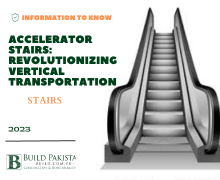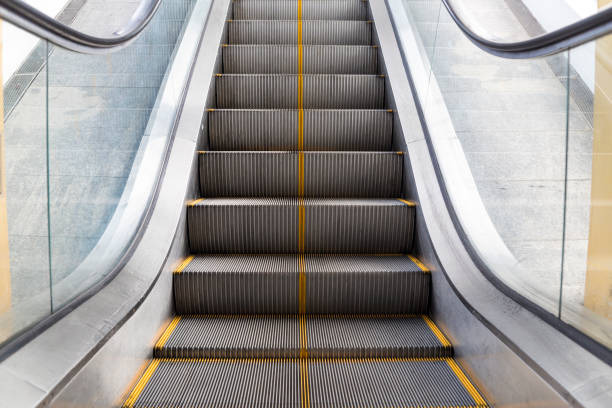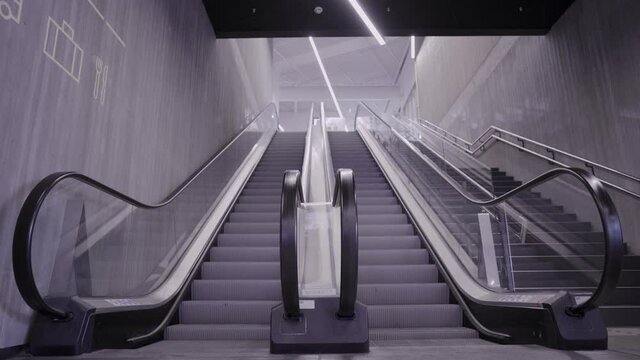Accelerator Stairs: Revolutionizing Vertical Transportation

Introduction:
Innovations in architectural design and
technology have led to the development of various solutions for vertical
transportation in buildings. Accelerator stairs, also known as moving stairs or
escalators, have emerged as a transformative concept that enhances convenience,
efficiency, and safety for users. In this blog post, we will explore the
concept of accelerator stairs delve into their functionality and benefits, and
discuss their impact on modern building design and user experience.

Understanding Accelerator Stairs
Definition and Functionality:
Accelerator stairs are
mechanical devices designed to transport people between different levels of a
building. They consist of a series of steps or treads that move in a continuous
loop, enabling users to ascend or descend effortlessly without the need for
physical exertion.
Differentiation from Elevators:
While elevators are commonly
used for vertical transportation, accelerator stairs provide a continuous flow
of movement. They allow users to step onto the moving steps and comfortable
ride to their desired floor, eliminating the waiting time often associated with
elevators.
Types of Accelerator Stairs:
Accelerator stairs come in
various designs and configurations to suit different building requirements.
These include traditional straight escalators, spiral escalators for compact
spaces, and even inclined moving walkways for inclined surfaces or long
distances.

Benefits of Accelerator Stairs
Enhanced User Convenience:
Accelerator stairs offer a
convenient mode of vertical transportation, allowing users to move quickly and
effortlessly between floors. They reduce congestion and waiting times,
particularly in high-traffic areas of buildings.
Improved Efficiency:
With accelerator stairs, users can
traverse multiple floors efficiently, making them ideal for large-scale
commercial spaces, airports, shopping malls, and transportation hubs. The
continuous flow of movement ensures a smooth and uninterrupted experience.
Accessibility and Inclusivity:
Accelerator stairs are
designed to accommodate a wide range of users, including individuals with
mobility challenges, the elderly, and those carrying heavy items. They provide
a barrier-free solution, enhancing accessibility and inclusivity within
buildings.
Time-Saving:
By eliminating the need to climb stairs manually
or wait for elevators, accelerator stairs save users valuable time, making them
particularly beneficial in time-sensitive environments. Users can easily reach
their destinations without delays.
Safety Features:
Accelerator stairs are equipped with various
safety features to ensure user well-being. These include handrails for
stability, sensors to detect obstructions, emergency stop buttons and audible
alarms. Regular maintenance and safety inspections are essential to keep the
escalators in optimal working condition.

Impact on Building Design and User Experience
Architectural Integration:
Accelerator stairs have a
significant impact on building design, influencing factors such as space
planning, traffic flow management, and aesthetic considerations. Architects and
designers must carefully incorporate accelerator stairs into the overall layout
to maximize efficiency and create visually appealing spaces.
User-Friendly Environment:
The presence of accelerator stairs
enhances the overall user experience within a building. They contribute to a
dynamic and modern environment, promoting ease of movement and reducing
perceived barriers.
Design Flexibility:
The availability of different types and
configurations of accelerator stairs provides architects with design
flexibility. They can be customized to fit the specific spatial requirements of
a building, allowing for creative and innovative design solutions.
Sustainable Transportation Option:
Accelerator stairs consume
relatively less energy compared to elevators, making them a more sustainable
transportation option. They can contribute to reducing energy consumption and
carbon footprint in buildings.

Conclusion:
Accelerator stairs have revolutionized vertical
transportation in modern buildings, offering enhanced convenience, efficiency,
and safety for users. Their ability to provide a continuous flow of movement,
improved accessibility, and time-saving benefits make them a valuable addition
to various building types. As technology advances, accelerator stairs continue
to evolve providing architects and designers with opportunities to create
functional and aesthetically pleasing spaces while prioritizing user comfort
and experience.









